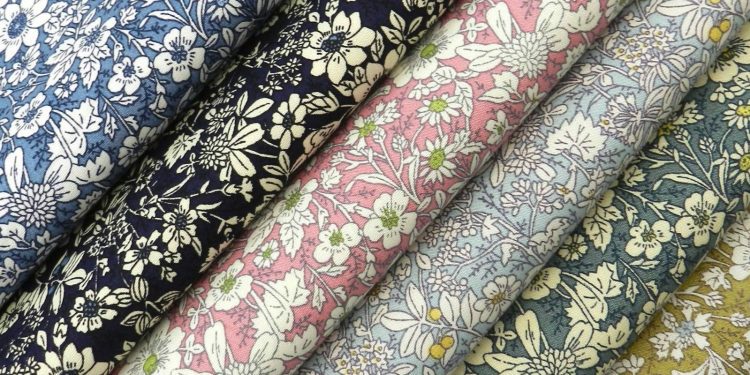Whether you’re looking to add character with vintage prints or seeking international flair through global designs, shopping for fabric online opens up a world of possibilities. With endless colors, textures, and patterns at your fingertips, all it takes is a click to bring inspiration to your projects. In this guide, we’ll explore some of the top online fabric retailers, share tips for smart shopping and bargain hunting, and help you choose quality materials tailored to your unique style. For anyone looking to buy fabric online, knowing where and how to shop can make the experience more rewarding and cost-effective.
Unveiling Hidden Gems in the Online Fabric World
Local vs. Global: Weighing Options for Fabric Purchases
When selecting textiles online, buyers regularly find themselves comparing massive retailers to niche boutiques. Buying from prominent stores has conveniences: competitive costs, abundant selections, and guaranteed returns. Significant sellers build ties with manufacturers, cutting expenses for bulk acquisitions. This benefits ambitious projects or commercial needs.
Still, local boutiques offer personalized service. Expert shops highlight uncommon, high-quality handcrafted fabrics unavailable elsewhere, fitting inventive works. Proprietors comprehend fabric’s community intimately, advising keenly on items’ traits and uses. Unfortunately, prices may not compete, and stocks change erratically. Ultimately, whether purchasing nearby or distant relies on budget, project scale, and values regarding sustainability and cottage industries.
Cracking Fabric Classifications: Decoding Online Listings
Deciphering net fabric descriptions seemed puzzling initially but comprehending principles simply enhances shopping. Each material exhibits defining qualities about weight, weave, composition, and care. E-markets normally include these property depictions alongside photos capturing feel and hue. Learning denominations such as “denier” measuring weight or “gauge” for knits aids informed choices.
While online retailers frequently showcase samples for sale, nothing compares to the real thing. Examining a physical swatch allows one to accurately confirm color, texture, and hand before a major purchase. It is prudent to check if any pretreatments were applied or whether photographs precisely portray the true hue—variable lighting can distort what our eyes behold. Moreover, customer uploads and reviews provide valuable real-world insights, shedding light on a fabric’s performance across an array of undertakings.
Weaving Expertise: Strategies for Curating a Fabric Repository
Attaining Mastery in Material Selection: Pairing Textiles with Prospective Projects
Success often hinges on selecting the right stuff. Before embarking on new ventures, ponder the nature of the envisioned end product. For instance, lightweight cotton or linen may be ideal summer dresses while heavier materials like canvas or upholstery suit bags and interior decor. Understanding how textures flow, stretch, and breathe profoundly impacts usability and aesthetics.
When assessing options, one must also think about functionality. Does it demand breathability and resilience for exercise? Opt for blend with supplemental give. If formalwear, investing in high-quality silk or luxurious mixtures could significantly elevate the final form. Furthermore, blended fabrics combining cotton softness with synthetic wrinkle-resistance offer advantages of various fibers.
Sustainable Fabrics: Make Eco-Conscious Choices Without Compromising Style
In today’s environmentally aware world, selecting sustainable fabrics has become increasingly significant. Eco-friendly options like organic cotton, lyocell, and recycled polyester are more available as public knowledge expands. Not only do these materials help minimize environmental effects, but they regularly exhibit superior qualities for example breathability and comfort.
Brands focused on sustainability frequently reveal information about their sourcing, manufacturing processes, and work practices, appealing to conscious customers who value ethical manufacturing. Look for certifications such as Global Organic Textile Standard or OEKO-TEX Standard 100, which confirms that the fabrics are free of dangerous substances. By incorporating sustainable fabrics into your initiatives, you not just align with eco-friendly values but also motivate the fashion industry to embrace careful consideration over mass production.
Fabric Weight and Texture: Understanding the Fundamentals for Your Creative Endeavors
Comprehending fabric weight and texture is critical to ensuring that the materials you select will perform as expected throughout your crafting process. Fabric weight is usually measured in grams per square meter or ounces per square yard and can significantly influence the structure and stability of the final product. For example, heavier fabrics like denim or canvas work wonderfully for structured clothing, while lighter fabrics for instance chiffon or organza create flowing, romantic silhouettes. More compact sentences were used alongside longer, more complex sentences to increase burstiness while maintaining a similar word count and level of complexity.
The tactile nature of materials plays an important role in any craft. Fabrics range widely in feel, from silky smoothness to coarse roughness, influencing both the look and handling of a finished work. Textured fabrics like corduroy or tweed likely require different sewing methods to achieve a flawless appearance. Thus, understanding the hand and heft of selected fabrics matters not solely for aesthetics but for functionality and longevity of use.
Various retailers provide fabrics at reduced costs throughout the year. Season’s end frequently brings markdowns on recent styles, allowing stocking of supplies for upcoming makes at smaller outlays. Membership in email lists and social networks may deliver early word of flash promotions and exclusive digital coupons. Loyalty programs at shops commonly introduce extra shavings or rewards for repeat patronage. Browser plugins and deals aggregate sites too may yield discount codes for further savings. Joining online craft circles leads to industry scoops on specials across sellers, supplying knowledge to acquire quality textiles very affordably.
How to Interpret Customer Reviews: Finding Gems Among the Raves and Rants
When purchasing fabric online, sifting through customer reviews is a valuable strategy. Positive reviews often highlight the fabric’s quality and usability in various projects, providing insights beyond product descriptions. Look for comments discussing how the fabric held up during washing or its ease of sewing, indicators of overall performance.
However, pay attention to negative reviews as well. If multiple reviewers mention issues like inconsistent color, inadequate weight, or fabric fraying, these comments warrant consideration. Additionally, an experienced reviewer may offer a nuanced perspective compared to a beginner. Therefore, reading detailed reviews rather than just star ratings helps distinguish quality selections from disappointments.
Returns 101: Navigating the Fine Print for a Hassle-Free Experience
Understanding a retailer’s return policy is paramount when buying fabric online, as colors can vary significantly on screen versus in person. Knowing you can return a fabric that doesn’t meet expectations can reduce shopping stress. Look for retailers with free returns or generous windows, allowing ample time to evaluate in person. Policies regarding opened versus sealed items also impact decisions, so review terms thoroughly for hassle-free shopping.
Before making a final purchase, reviewing frequently asked questions or contacting customer support for clarification on return procedures can prevent future difficulties. Recording order confirmations and any communication with retailers can streamline returns, ensuring that if a fabric fails to meet expectations, the resolution causes minimal hassle.
From Online to Reality: Transforming Web Finds into Projects
Inspiration from Virtually Anywhere: Websites and Social Networks for Novel Concepts
Fabric selection is just the initial stage of creative exploration. Presently, forums, blogs, and social networking platforms contain wealths of inspiration. Sites like Pinterest and Instagram facilitate discovering trending works and innovative uses for diverse fabrics. Tracking pertinent hashtags may guide one to talented artisans demonstrating their crafts, offering visual cues and step-by-step instructions unveiling fresh possibilities for existing materials.
Additionally, fabric-focused blogs, like Sew Mama Sew or The Fabric Store Blog, regularly share tutorials, pattern reviews, and fabric highlights that can verify or inspire fabric choices. Engaging in online sewing and crafting communities through comments and discussions may also expose remarkable projects that can be replicated or adapted. In this manner, exploring the digital realm enhances both aptitudes and confidence, equipping one with knowledge necessary to tackle more complex creations.
Technical Tips: Preparing Fabric for Different Types of Projects
Each material has inherent qualities that determine how it should be handled prior to use. Getting cloth ready for sewing regularly includes preshrinking, laundering to expel any synthetic substances or residues, and potentially pressing to guarantee a tidy, level surface to work on. Textiles like wool or silk may necessitate more careful treatment, while cotton and cotton blends tend to withstand more robust preparations. Always check care labels and comprehend the material’s properties to decide the best strategy.
For quilting or more exacting sewing projects, reducing fabric on the slant or along the grain can fundamentally affect the last result. Moreover, utilizing proper interfacing and stabilizers for different ventures can make a huge difference in sturdiness and finish. Information of material may prompt novel strategies, for example, slant binding or gathering, which can enhance the general look and execution of the last item.
Share Your Achievements: The Importance of Community in Creative Fabric Use
Ultimately, one of the most fulfilling parts of material craftsmanship is the chance to offer your creations and gain from others. Participating in sewing circles, online networks, or nearby craftsmanship gatherings invites joint effort, support, and a rich exchange of thoughts. Sharing your finished ventures on online networking or craftsmanship platforms not just builds your portfolio but also urges input from partners.
While cultivating ties to other fabric aficionados may boost your abilities, diverse dialogues with such a group often spark unconventional notions. Moreover, meaningful bonds formed within this community frequently prompt cooperative efforts and alliances, shifting the focus from solitary crafts to shared experiences and partnerships. By championing fabric’s potential for invention together, members strengthen an atmosphere where diverse talents thrive.

















